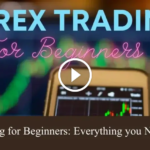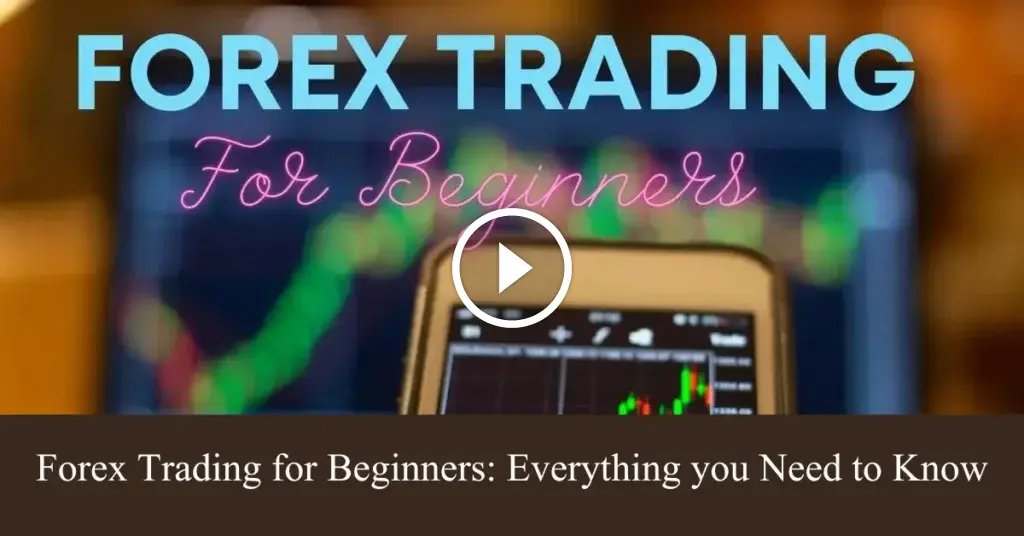[ad_1]
With technological advancements seeing our daily use of online platforms increase in a massive way this century, pursuits like trading have soared in popularity. Particularly in the last decade, with the development of mobile devices making it more accessible and convenient than ever before, it has continued to grow and grow.
Forex trading in particular is one of the most common forms, with an estimated daily trading volume now said to be at a huge $7.5trillion.
If you are new to forex trading and want to learn more before getting involved, this article will tell you everything you need to know.
What is Forex Trading?
Forex trading, put simply, is the buying and selling of different currencies with the main aim being to make a profit on your trades. The term forex comes from the words foreign and exchange and is a global marketplace for traders to exchange national currencies.
As currencies are traded in pairs, a trader will speculate on whether one currency’s value will rise or fall against the other. Therefore it is important to take the time required to gain a solid understanding before diving into trading.
Importance of Learning Forex Trading Terminology First
The world of forex trading is full of lexicon specific to the industry and so learning the terms and familiarizing yourself with each one will help you in the early stages of your trading journey. It is imperative you conduct thorough research as and when you come across the new terminology in order to build your knowledge. From CFDs to PIP, leverage to spread and margin, being aware of what terms mean will help you decipher the processes involved in trading and how it is all linked.
How to Start Forex Trading
First things first, you will need to set up a forex trading account. It’s important to research before selecting a broker in order to find one that will suit your trading needs and preferences.
You will next need to verify your identity and then add funds to your account to begin trading. The amount required will vary depending on the platform.
After learning the basics and developing your knowledge of forex trading, be sure to research currencies so that you can then utilize technical analysis into the optimum timing points and price levels. Understanding a nation’s financial condition and the currency’s value will help you to make smart and informed choices. Then it’s time to make your first trade.
Forex Trading Strategies
Two of the most basic Forex trades are long trades and short trades. For a long trade, the trader is predicting that the currency price will go up whereas for a short trade, they are betting that the pair price will decrease. It’s also a wise move to use a forex profit calculator which is a tool to help traders calculate profits and losses depending on the outcome of trades.
In terms of different strategies, there are four main types that can be utilized by traders which are listed here below.
Day Trade
As the name suggests, positions for these trades are held and liquidated on the same day and this can be for hours or even just minutes.
Scalp Trade
Scalp trades involve positions that are cumulatively held for seconds or minutes at the most.
Swing Trade
In some instances, it makes sense to keep the trade for a longer period of time and the swing trade is when a trader holds the position for a few days or weeks.
Position Trade
This move involves the trader holding the currency for an extended length of time, often months but even years.
The Importance of Technical Analysis
Its vital traders study price action and price chart trends in order to react to different movements. By tracking these via technical analysis, traders can more accurately interpret various patterns in charts which can help work out price levels and the correct time to enter and exit the market.
There are three charts that are particularly popular among traders for assessing different figures and movements. These are the candlestick chart, the bar chart and the line chart.
For traders using the candlestick chart, if the ‘candlestick’ is covered, this means the currency pair closed lower than it opened while the closing price is higher than the opening price if the ‘candlestick’ featured on the chart is hollow.
The bar chart, meanwhile, clearly shows the opening and closing prices, together with the highs and lows for the particular timeframe. This is particularly useful for those traders looking to identify the contraction and expansion of price ranges. Line charts are as simple to decipher and in forex trading show the closing prices which can help identify price movements.
Wrapping Up
If you are only just dipping your toe into the forex trading waters for the first time, it can be a daunting feeling with so much to understand and a number of different terms to get your head around. However, with consistent learning and a desire to boost your knowledge, forex trading can be an enjoyable and worthwhile endeavour.
It is important to manage your trades and stay updated on different movements so that you can react accordingly. As you learn the ropes, forex trading will soon become clearer to navigate.
[ad_2]
Source link



















+ There are no comments
Add yours